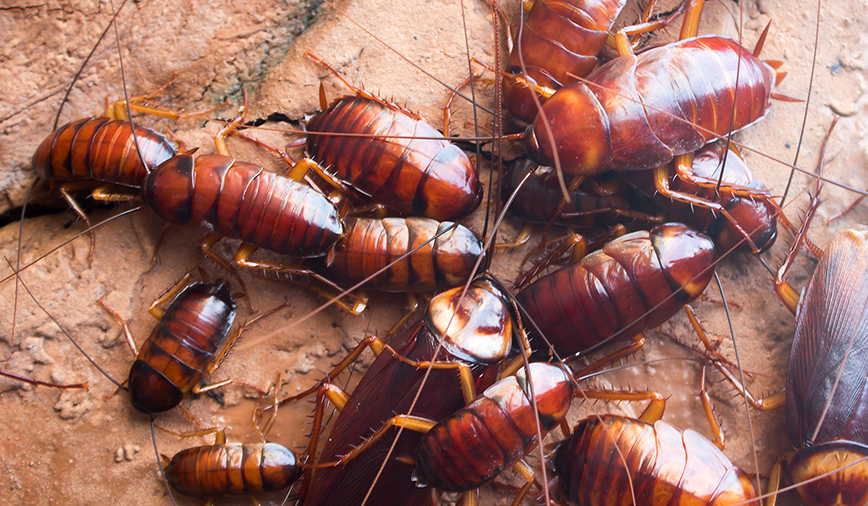November 22, 2013 Roaches
It’s the season for gratitude, a time of year when people make a special effort to list the things for which
they are thankful. As much as I wish this attitude would extend throughout the year (just like I wish folks would make every day an Earth Day) it’s still good to see and hear so many people expressing appreciation for their many blessings: family; friends; our dedicated service men and women protecting our freedom.
My own list includes these good things, plus a few others. Each morning when I turn on the shower, I am thankful for the miracle of abundant hot water. When I come home at night, I smile and give thanks for the welcoming warmth (in winter) and the comforting coolness (in summer) that my aging HVAC system still kicks out.
And when I’m sitting at my desk at work, I’m thankful for the Blattodea. Specifically, the cockroaches.
I’ve always been a sucker for the downtrodden and, let’s face it, there aren’t many organisms with worse reputations than our friends the roaches. Yep, the creatures that rank low on virtually everyone’s list–the ones that are associated with filth and pestilence, the stars of commercials for Orkin, Raid and Black Flag’s Roach Motels—really do have some redeeming qualities.
The truth is, our planet would be a mess without them.
Of Earth’s 4,500-ish cockroach species (the reason for the ish is, entomologists are still discovering new ones), only about 15 are considered pesty. Those other 4,485ish types of roaches are working hard every day to make our planet a better place.
All organisms have a job to do, and for roaches that to-do list includes consumption of organic matter—dead plant and animal material that, were it not for cockroaches and other decomposers, would soon pile up and overwhelm us all.
While their intake is important, their output may be even more so. Cockroach, um, frass—the entomological term for bug poop—returns the valuable element nitrogen into the soil, making it richer and more fertile and enabling new plants to grow.
This natural process is vital to the success of ecosystems around the world. But it also has application in manmade environments.
Say hello to blatticomposting—a still-evolving technique that relies on roaches to convert food waste into compost. Researchers at the University of Michigan-Dearborn’s Environmental Interpretive Center have been experimenting with the use of Eublaberus spp., tropical roaches from South America, to consume lunch leftovers like banana peels, apple cores and melon rinds. The facility’s collection of approximately 2,000 individuals can make an apple disappear in hours, and was able to transform more than 50 lbs. of fruit and vegetable waste into nutrient-rich compost in only a few months.
I mentioned earlier that I give thanks for roaches while I’m at work. As I write this, I’m watching a group of 200 or so Blaptica dubia, or dubia roaches, consume the core of the Malus domestica, or apple, I had with lunch today. Adults and nymphs alike are scurrying about—inside their escape-proof bin—to get a crack at the sweet treat. I know that tomorrow morning all that will remain of the apple is the stem and seeds. The roaches, meanwhile, will be looking for more.
Besides reducing my impact on the waste stream, these dubia roaches also help reduce the cost of feeding the various insect-eaters that are part of our education animal team here at Hickory Knolls. The captive dubias are an essential part of that food chain, just as wild cockroaches are integral parts of food webs worldwide.
I could go on about the Blattodea’s many virtues, and how at the current time we have not just dubias, but also Blaberus discoidalis, the discoids, and Gromphadorhina portentosa, the hissing cockroaches, in our insect zoo here at Hickory Knolls. I could even discourse on their aesthetic appeal. (If you don’t believe me, stop by Hickory Knolls some time. I would be glad to show you how they really do have cute faces.) But it looks like we’re out of space, and out of time, constraints for which I’m sure you’re…thankful…
Pam Otto is the manager of nature programs and interpretive services at the Hickory Knolls Discovery Center, a facility of the St. Charles Park District. She can be reached at 630-513-4346 or potto@stcparks.org.

